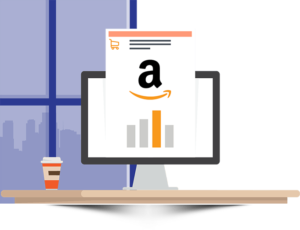
Unlocking Amazon Success: Mastering Total ACOS Optimization
Introduction: In the dynamic realm of Amazon advertising, success hinges on mastering key metrics, and
When we talk about marketing, branding, sales, content marketing, digital marketing, storytelling, and advertising, we tend to put everything in one basket and say ‘marketing’. Or we say “Let’s do more marketing to increase our sales”.
Every single business needs to survive; every single business needs clients. It doesn’t matter if it’s a business that makes billions in revenue, a start-up funded by a private equity firm, or a bootstrapped company.
Branding and marketing are different, yet they need to work together. Let’s dive into each part separately.
“A brand is a name, term, design, symbol, or any other feature that identifies one seller’s good or service as distinct from those of other sellers.”.”
“Branding is architecting and managing the meaning and experience of the brand with intention.”
So branding is managing the meaning of the brand.
Here’s a quote I love about branding that explains it in a very different way:
“A brand is a promise. It’s a promise that your company can keep. You make and keep that promise in every product experience, marketing activity, every action, every corporate decision, every customer interaction.”
“Marketing outlines the specific activities of how, where and when a brand will promote its products and services to its customer targets in the marketplace.”
To view it another way, it’s looking at marketing as tactics, how we will increase our sales, what channels we will use, and how we will reach our potential audience. How we will promote this product to the audience; i.e. create an outdoor campaign, radio advert and a film for social media.
Branding is about ‘why the company exists and what feelings we want our potential audience and customers to feel.
The other difference between the two is that branding is long-term and marketing is short-term. Many business owners don’t want to invest in branding because we all want results today. I want to see results next month if I invest £50k in ad spend online. It makes logical sense. With branding, you can’t do that.
Branding is about perception; how can we create a brand that is perceived a certain way? It’s about emotional resonance that lasts over time. It’s the emotional connection.
With marketing, you can’t create an emotional connection. You see an advert online; you either see it and click it, then buy or book the product/service, or you don’t.
When we create brand stories at Way Boutique, those are branding activities because we are making a story that will potentially help the company create an emotional connection, differentiate the brand and build loyalty.
On the other hand, marketing monetises the value created by branding.
Another great way to think about it is the touchpoints that customers have. Before we buy any product, we always have a lot of touchpoints before the sale. If we are unfamiliar with the brand, we will do our research. We will read reviews, ask for opinions, check their website, social media presence etc.
With excellent branding, we help marketing and sales do their job more efficiently. So, for example, if the company’s branding is perfect, it will be easier to make sales.
It’s way harder to sell without good branding — you need to convince someone they are good. A great example of this is that two weeks ago, I needed to buy insurance for my new bike. I’m new to this category, so I had no idea of any companies. I did my research and found a company called Laka. Their brand was spot on; design, user experience, tone of voice, the website is easy to use, and the price was great (for me). Their brand made me feel that they are reliable, a good company and payout is easy if you ever need it. The sale was made immediately. I didn’t even look for other competitors.
Here’s another excellent example of how ‘bad’ branding can hold you back. When I got my skydiving license, I was over the moon. I posted on a private Skydiving group on Facebook about my story (I failed previously and then succeeded) with my new coach. I praised my coach a lot and thanked him in the post. My account got a bit of traction; many people commented, sent me messages, etc. whenever somebody asked me about a coach or doing the AFF license, I always recommended my coach.
Now, you would think he got a lot of leads and sales. No, he didn’t. He did get one or two new students. But why? Well, unfortunately, his branding is not very professional. You can see that an amateur does it. When you see brands like Skydive Spain or Empuriabrava Skydiving, you see a difference in the brand’s quality. People read my story, and those interested looked at his presence and decided (perhaps subconsciously) that he was not for them.
Another brand, Skydive Empuriabrava, might need 5,000 to be interested, have testimonials and convert maybe 5% of those into customers.
Great branding makes it easier for brands to sell their products and services as a first step and the second step (if the brand has a great brand story) is to connect with customers on an emotional level.
Some might get confused here, so what you say is branding designs. No, of course not, but design comes in as well. Design is a fundamental part of branding, but it’s not everything. Before design work can start, there are other things that we need to consider — what do we want our customers to feel?
We can make our marketing easier when we have a great brand. So, for example, if we have a great brand, then when we market it, we can have a higher conversion rate because people like the brand; there is this intangible feeling.
When we don’t have a great brand and aesthetics are wrong, it’s harder to convince the other person to buy from us. It takes more time to research and ask; perhaps the customer finds someone else with a great brand.
Here are two things to remember about branding and marketing:
Another way to think about it is to think of an ultra runner. Let’s say we have a goal to run 100 km. We have one runner that followed a training plan, nutrition plan, and gear (shoes, vest etc.) and another that didn’t follow anything; he just showed up with jeans, casual shoes and a cotton t-shirt. Who do you think will finish faster? Or who do you think will finish the race? The answer is obvious.
You can still run in jeans and casual shoes, but how long will you last?
That’s the same question with businesses that don’t build brands. There are a lot of companies out there, but the question is, how long will they last?
If we want to build a meaningful brand that makes a positive impact, we need to work on our brand, which includes our brand purpose, our stories, and design aesthetics, among other things.
Visit our services page or contact us to get any service. You can find more information like this here.

Introduction: In the dynamic realm of Amazon advertising, success hinges on mastering key metrics, and

Building and managing a unique brand management can be tricky. Amazon Brand Registry is here

Introduction: Welcome to the dynamic world of e-commerce! If you’ve set up your Amazon store

Learn about crafting high-performance product listings in the Amazon store with this guide. What can